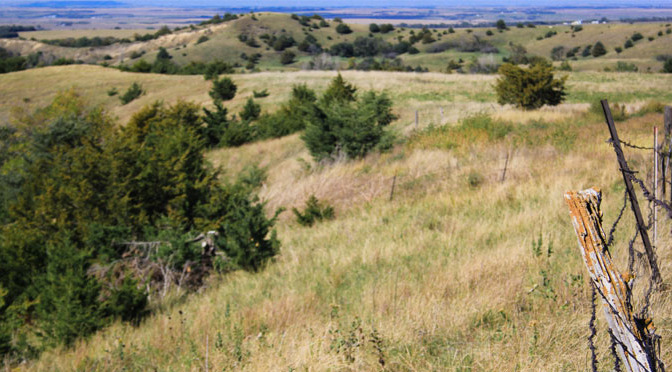Early season goose is often thought of by many hunters as the feast or famine season. Typically early goose season is designed to manage resident goose populations which in many states are far above population goals. It goes without saying that hunting early season geese presents a whole different set of challenges and strategies for these local resident geese than one would typically use for migrators during regular season.
1. SCOUT, SCOUT, SCOUT
One of the most notable differences between hunting early resident geese and hunting migratory geese is that resident geese are much more familiar with the area. Typically early season geese will only be flying a few miles to feed. This tends to make the resident geese much more predictable than migrators. For the hunter that has taken the time to do his homework and scout out these resident populations and pattern their movements this predictability can be an advantage. Many a successful early season hunter will tell you that being on the “X” is more important during the early goose season than during the late season.
2. UP and AT ‘EM!
The early bird gets the worm or in this case the goose. Early season is not the time to think “Oh gee I can sleep in just a bit and I’ll grab the second morning flight”. While geese may feed several times a day during the cold winter season, early season geese typically have a different feeding pattern that sends them to fields very early in the morning. Early season geese do have afternoon feeding periods as well, but those afternoon feeding trips are often highly unpredictable. This difference means get up, get out, and have those boots and decoys on the ground before sunrise. Those who do their homework, scout well, and are in place and ready when the morning flight arrives, are likely to find themselves limited out in plenty of time for breakfast or to get to work on time.
3. CHANGE UP THE DECOY SPREAD
Early season resident geese are often still in smaller family groups or groups of year old semi juvenile birds. Because they are still in the small groups, decoy placement needs to be different from what is normally used when hunting regular season migrators as well. The most successful early season hunters tend to place decoys in four or five simulated family groups of five to seven decoys spread out across the field. Another option that proves successful for many is similar to a late season decoy spread, only smaller. This type usually consists of around 20 decoys in a somewhat U shape to facilitate a landing zone.
4. CURTAIL THE CALLING
Early goose season is not the time to be wailing and moaning on the calls and flagging like you are at NASCAR race. If you’ve scouted appropriately, and lightened up your decoy spread, those early season geese will WANT to be where you are. After all, you’ve set up at their breakfast table. If you see geese working another direction, certainly give them a little encouragement. Try a few light moans, a couple of light honks, but as soon as you see those wings start to set, put the call down. Remember, early season flocks are heavily weight towards juvenile birds. With these uneducated birds there’s no real need for long shots either; likely as not they will end up flying right into your spread.
5. DRESS PROPERLY
The early season climate and conditions are another factor to be cognizant of. It’s often entirely too warm for regular gear, and you may well need to switch up the camo pattern as well. Typical winter waterfowl patterns may stick out like sore thumb in fields that are still green. A better choice might well be the same style that you would use for dove hunting. Concealment is just as important during early season, so make sure your camo matches your surroundings. Layered clothing is the way to go as while mornings may be chilly, once the sun rises it can warm up in a hurry. Next on the list is insect repellent or a Thermacell. There are still plenty of biting and annoying bugs out during early season and it’s hard to swat a goose if you are busy swatting mosquitoes and gnats.
 Lastly, please don’t forget to make adjustments for your dog. It’s still hot enough in September that you need to insure your dog stays hydrated, so be sure to bring along some water for your four footed friend or even an electrolyte replacement specially designed for working dogs in warm weather. It never hurts to carry along some Benadryl for you dog either. This is the time of year that dogs can still tangle with a variety of biting and stinging insects or even snakes. Check with your vet during your dog’s preseason check up and ask what dose of Benadryl is most appropriate for your dog.
Lastly, please don’t forget to make adjustments for your dog. It’s still hot enough in September that you need to insure your dog stays hydrated, so be sure to bring along some water for your four footed friend or even an electrolyte replacement specially designed for working dogs in warm weather. It never hurts to carry along some Benadryl for you dog either. This is the time of year that dogs can still tangle with a variety of biting and stinging insects or even snakes. Check with your vet during your dog’s preseason check up and ask what dose of Benadryl is most appropriate for your dog.
Early season goose hunting can be some of the best goose hunting of the season, and is certainly a great opportunity for the new goose hunter in your life to experience some successful days afield before the bitter cold, snow and ice arrive. This is the time to be taking those young ones afield – it’s not brutally cold, their chances for success are higher, and by the time regular season rolls around they will have some good experience under their belts.
Whatever your reason for hunting early goose season, remember these tips, enjoy every day out there and be happy that once again waterfowl season is here!



